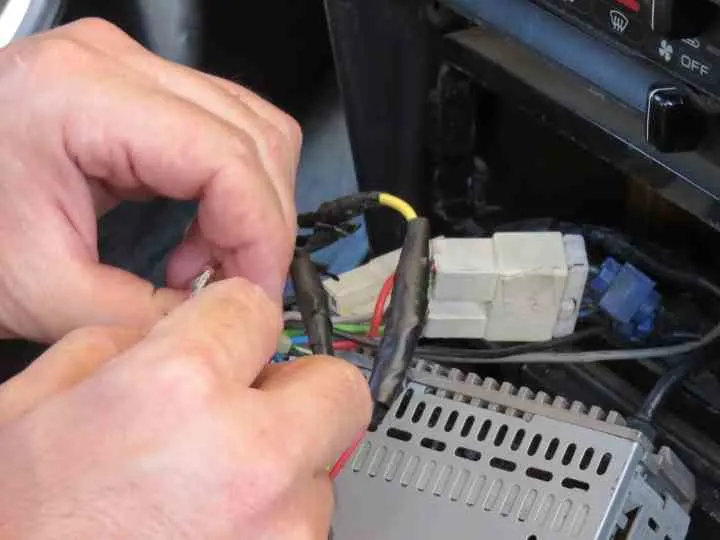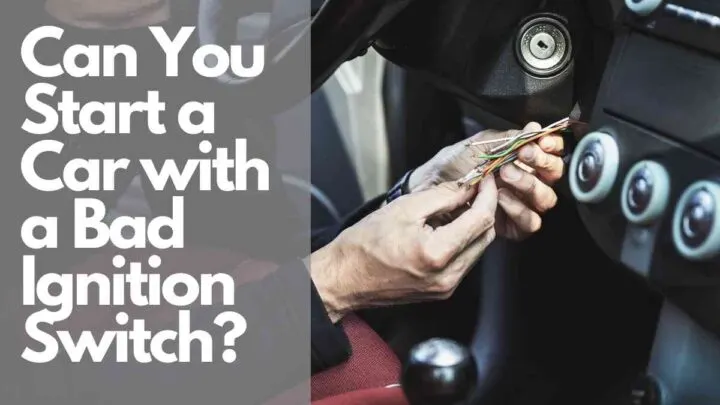A faulty ignition switch can make or break the difference when you’re running late for your meeting, or you need to have the peace of mind that your car is fully functional and ready to be used at any time.
Well, when you’re in a situation where your ignition switch has gone bad and isn’t working, is it still possible to start your car, or is it time to call a tow truck?
A faulty ignition switch usually needs replacement and won’t help you in emergency situations. However, there are different methods to diagnose and repair a faulty ignition switch, until you can get a permanent solution.
This article will talk about the different symptoms of a faulty ignition switch, the different problems that can cause an ignition switch to become nonresponsive, and how to start a car with a bad ignition switch.
So, make sure to read this article to the very end so you’re read up and know what to do in such a situation!
How to tell if your ignition is bad?
The first step in fixing a faulty ignition is knowing when it’s starting to break down.
If you experience any of the following, then chances are that your ignition switch is failing.
The car won’t start
Broken internal wiring or wearing down of the ignition switch can cause the car to not start when you prime it.
This is a surefire symptom of ignition failure.
Steering wheel unable to move
If you feel that the steering wheel is stuck, and you can’t turn it, that may mean one of two things.
Either that the steering wheel is locked, or that the ignition switch is broken.
You can check this by inserting the key into the key slot and turning the wheel until you feel it is able to move freely again.
Car keeps stalling
If your car engine dies suddenly while driving, there is a chance this is due to a faulty ignition switch.
No engine noises
If you start the car and are not met with the familiar sound of your engine, that may mean that there’s an electrical issue or an issue with the ignition switch.
Causes of ignition switch malfunction

There are several different reasons why your ignition switch has decided to call it quits.
Some can be trivial and easily solved, while others might require special attention.
Worn keys
Chances are that your key has been used so much, that it has lost its ability to turn the ignition.
This is not unheard of, and the best solution would be to get your lockset replaced along with the ignition cylinder.
Faulty ignition switch
There is a possibility that the ignition switch itself is broken.
Essentially, the ignition’s job is to connect the different electrical parts of the vehicle in order to power them as per the situation.
These parts differ according to the position the key is in.
For example, in the ON position, the ignition will turn the starter relay on, whereas in the ACC position, you can only use certain electric devices like the radio or music player.
After making sure that the issue doesn’t lie with anything else, like the fuses, relays, circuits, etc., you might need to replace the ignition switch altogether.
Immobilizer
Newer models of cars come with transponder keys, which enable the key to remotely connect with a chip inside the car to enable or disable the car.
This is to deter auto theft, but it could lead to the car not functioning and be mistaken as a fault with the ignition.
If the transponder key isn’t programmed with the car’s chip, then it can cause the car not to start.
If the key is damaged, this might also cause an issue with the transponder and thereby cause the car to not start.
Fixing this issue requires you to correctly the program the key with the immobilizer or replace the battery in the transponder key fob.
Ensure that the electronics aren’t broken by consulting with a professional, so you don’t waste time.
Starting a car with a broken ignition switch
If the problems we mentioned still weren’t solved, and you’re still unable to start the car, then there are some unorthodox methods that you can try to start the car.
Hotwire the car
For older models, pre-2000 would be more appropriate, Hotwiring the car bypasses the ignition switch altogether.
You will need to remove all the plastic covers of the steering wheel column and locate the wiring harness connector. This is usually located in the middle of the steering wheel column.
After this, you will need to locate the battery, ignition, and starter wires. These are color coded, with yellow and brown relating to ignition, and red for battery.
Once you’ve correctly identified these wires, you will need to strip the insulation off the battery wires (around an inch) and tie them together.
After this, connect the ignition wire (also stripped down an inch) to the battery wire, and the car’s electrical parts will begin working. This is akin to the key being inserted and turned to the ACC position.
This should be followed by stripping the starter wire from an inch of insulation and connecting it to the connected battery wires.
This should cause the engine to start up.
Drilling the ignition switch
If all else fails and you know that a faulty ignition switch doesn’t let your key start the car, you can drill into the keyhole for the same length your key has.
After this, you can insert a screwdriver and use it as a makeshift key to turn the ignition.
Beware that this will completely render your ignition beyond repair, and you will need to get it replaced.
Jumping the car
Another method is to connect the battery to the ignition coil. This is done by first locating the ignition coil and connecting the battery’s positive terminal to the positive coil.
After this, you will need to locate the starter solenoid and connect it to the battery’s positive terminal. Then unplug the ignition switch wiring connected to the solenoid.
Short the solenoid’s positive terminal with the ignition switch, and the car should start.
Final thoughts
Well, we hope this article was helpful, and you know the causes and solutions for a broken ignition.
Make sure to always consult a mechanic or professional and get a broken ignition switch fixed immediately.
